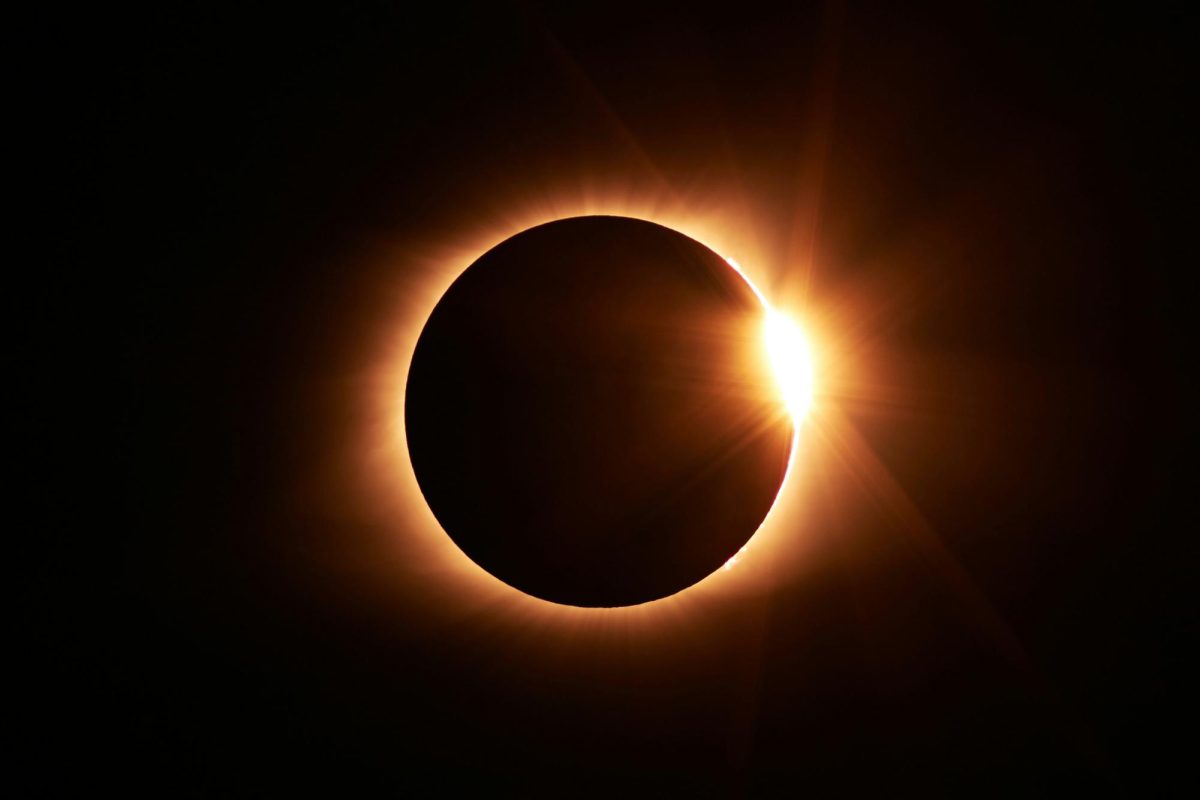On April 8, one of the most famous astronomical phenomena of the universe is happening in the afternoon sky. A solar eclipse is expected to set across North America, darkening the sky and causing a temperature change in visible regions. A solar eclipse happens when the moon passes in front of the sun, which blocks the travel of light to Earth. The solar eclipse, nicknamed the “Great North American Eclipse,” will be particularly special because the moon is closer to the Earth, therefore making the eclipse larger than the ones before.
As if the solar eclipse isn’t enough, scientists are predicting that there might be a ‘devil comet’ that is set to be visible during the eclipse, Fox Weather mentioned in its article regarding the comet. Comet 12P/Pons-Brooks is nicknamed the ‘devil comet’ due to the horns-shaped trail that it acquired during the eruption that it caused last year. If the comet flares significantly during the eclipse, some may view it alongside the eclipse. This event is also a major source of excitement for numerous stargazers as the comet’s colorful outbursts are available to view without a telescope once at its peak viewing, something that hasn’t been visible for 71 years.
The eclipse itself is predicted to start in Mexico and move across the North American continent. In North Jersey, from 2:09 p.m. to 4:37 p.m. EST, a partial eclipse will officially begin, with 92% coverage as long as there is no inclement weather. Unfortunately, North Jersey is not in the path of totality during this year’s solar eclipse. A path of totality in astronomical terms means that “people in the path viewing the eclipse will see the moon completely covering the sun, some also seeing the sun’s corona, or outer atmosphere that is normally obscured by the bright face of the sun,” NASA explained on its official website.
The longest duration of the totality is estimated to be four minutes 28 seconds, and in most places, the totality will average from three minutes to four minutes. Despite how long it may be, stargazers and sky-watchers should utilize special tools to protect the naked eye while watching the eclipse. Authorities have issued warnings that looking directly at the eclipse may cause permanent eye damage. As a result, many states are officially closing their schools due to the hazards that the eclipse may bring. The states that have planned to close schools for the day include Texas, Indiana, Ohio, New York, Pennsylvania, and Vermont.
For partial solar eclipses such as the one in the North Jersey area, it is important to always wear eye protection when viewing it. When looking at the solar eclipse, one should view the eclipse with special eclipse glasses or handheld solar viewers. Additionally, it is crucial to remember that one should avoid looking at the sun with a camera lens, binoculars, or telescopes, NASA advised.
Many scientists in NASA anticipate technological mishaps during the eclipse, but they cannot be sure because a total solar eclipse happened only once since cell phones were invented. Currently, NASA believes that the eclipse may “disrupt radio signals and GPS navigation systems, affecting the communication and navigation abilities of the affected regions.”
Total solar eclipses, although rare, provide scientists with an opportunity to view Earth’s atmosphere while uncommon conditions exist. April 8 is a few weeks from now, and people eagerly await the arrival of the moon in front of the sun. The upcoming eclipse will be a rare opportunity to enjoy the natural beauty of the universe, for there are so many stars in the galaxy that one cannot see all of them in a single lifetime.













































































































































